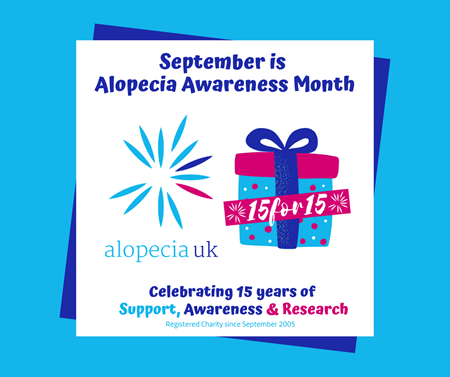Alopecia InfoThe onset of hair loss is often sudden and random. While the disease itself does not affect a person's health, coping with it can prove challenging. There are many causes of hair loss including stress, genetics, hormonal changes (e.g. thyroid problems, menopause, polycystic ovaries), age, skin problems, diet. But it can also be completely random. As people get older, they become more prone to hair loss, and over 20% of people with alopecia have a family member with it. There are four different types of alopecia: - Alopecia Areata - typically causes patches of baldness.
- Alopecia Androgenetica – receding hair, also known as male-pattern baldness or in women, 'Widow’s Peak'.
- Alopecia Totalis - loss of all head hair.
- Alopecia Universalis - loss of all body hair, including eyebrows and eyelashes.
Many famous people have been affected by this disease. Legend has it that Marie Antoinette's hair turned white overnight. But what actually happened was her coloured hair fell out leaving only her white hair left. Duncan Goodhew and Matt Lucas both lost their hair after childhood accidents. Gail Porter lost her hair in 2005 - thought to be caused by the stress of post-natal depression and her marriage break-up. 
As the condition is unpredictable, in many cases hair grows back without treatment. If there are just one or two small bald patches then many doctors would advise that you simply leave it alone at first. But if treatment is required, here are some options: Treatments for Alopecia Steroid treatment - doctors can use steroids to treat alopecia via injections, oral medication or creams. Light therapy - this treatment has been used with limited success. Immunosuppressant medicine - has worked in some cases, but its use is limited due to potential side-effects. Changes to diet - doctors would recommend a diet high in 'first class proteins' found in eggs, meat and fish. The best course of action is to visit your GP first, rather than search out a trichologist or company yourself, as there is always the risk that some businesses may be unscrupulous. Be aware that there are no laws or rules to stop an unqualified, untrained person calling themselves a trichologist. Here are some useful links with further information available: There are several types of Alopecia, here is a brief description of the types and names given: Types of AlopeciaHair loss comes in a number of different forms. Listed below are the main types of hairloss and the characteristics of each type. Alopecia UK concentrates, though not exclusively, on alopecia areata, alopecia totalis and alopecia universalis, which are collectively used on this site under the term alopecia. -
Alopecia Areata (AA) - Used to describe hair loss occurring in patches anywhere on the body.
-
Alopecia Totalis (AT) - Total loss of the hair on the scalp.
-
Alopecia Universalis (AU) - Total loss of all hair on the body.
-
Alopecia Barbae - Loss of facial hair (for a man) especially in the beard area.
-
Alopecia Mucinosa - A type of alopecia which results in scaley patches.
-
Androgenetic Alopecia (AGA) - Also known as male pattern baldness. It is a thinning of the hair to an almost transparent state, in both men or women. It is thought to be a hereditary form of hair loss.
-
Traction Alopecia - Traction alopecia is usually due to excessive pulling or tension on hair shafts as a result of certain hair styles. It is seen more often in women, particularly those of East Indian and Afro-Caribbean origin. Hair loss depends on the way the hair is being pulled. Prolonged traction alopecia can stop new hair follicles developing and lead to permanent hair loss.
-
Anagen Effluvium - This hair loss is generally caused by chemicals such as those used to treat cancer. Initially it causes patchy hair loss, which often then becomes total hair loss. The good news is that when you stop using these chemicals the hair normally grows back (usually about 6 months later). Other drugs also can cause hair loss. Many medicines used to treat even common diseases can cause hair loss.
-
Scarring Alopecia - A form of alopecia which leaves scarring on the area of hair loss.
-
Telogen Effluvium - A form of hair loss where more than normal amounts of hair fall out. There is a general 'thinning' of the hair. Unlike some other hair and scalp conditions, it is temporary and the hair growth usually recovers.
If you do suffer from Alopecia we can reduce your costs by giving you VAT Relief Click here to learn more ;...... VAT RELIEF 
| 
